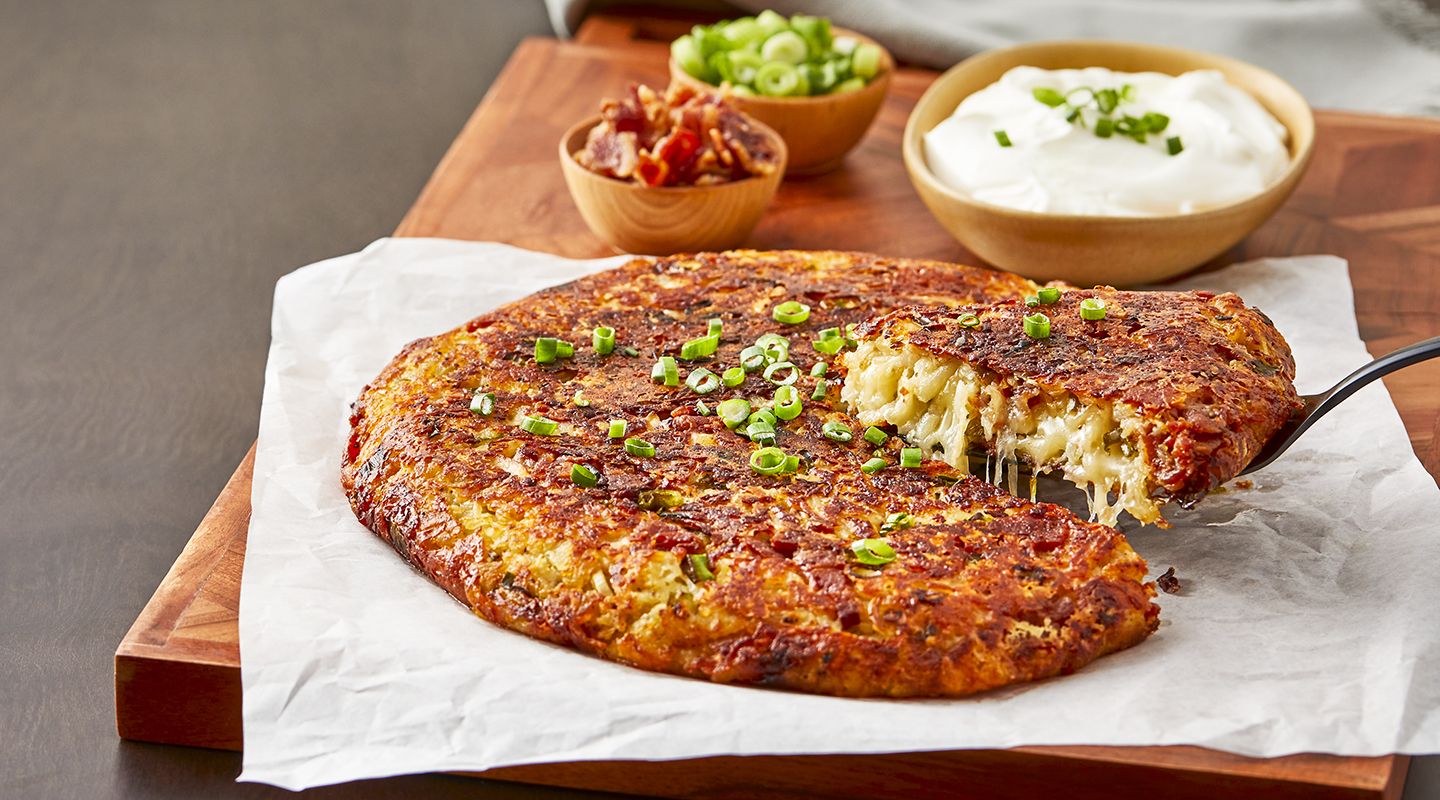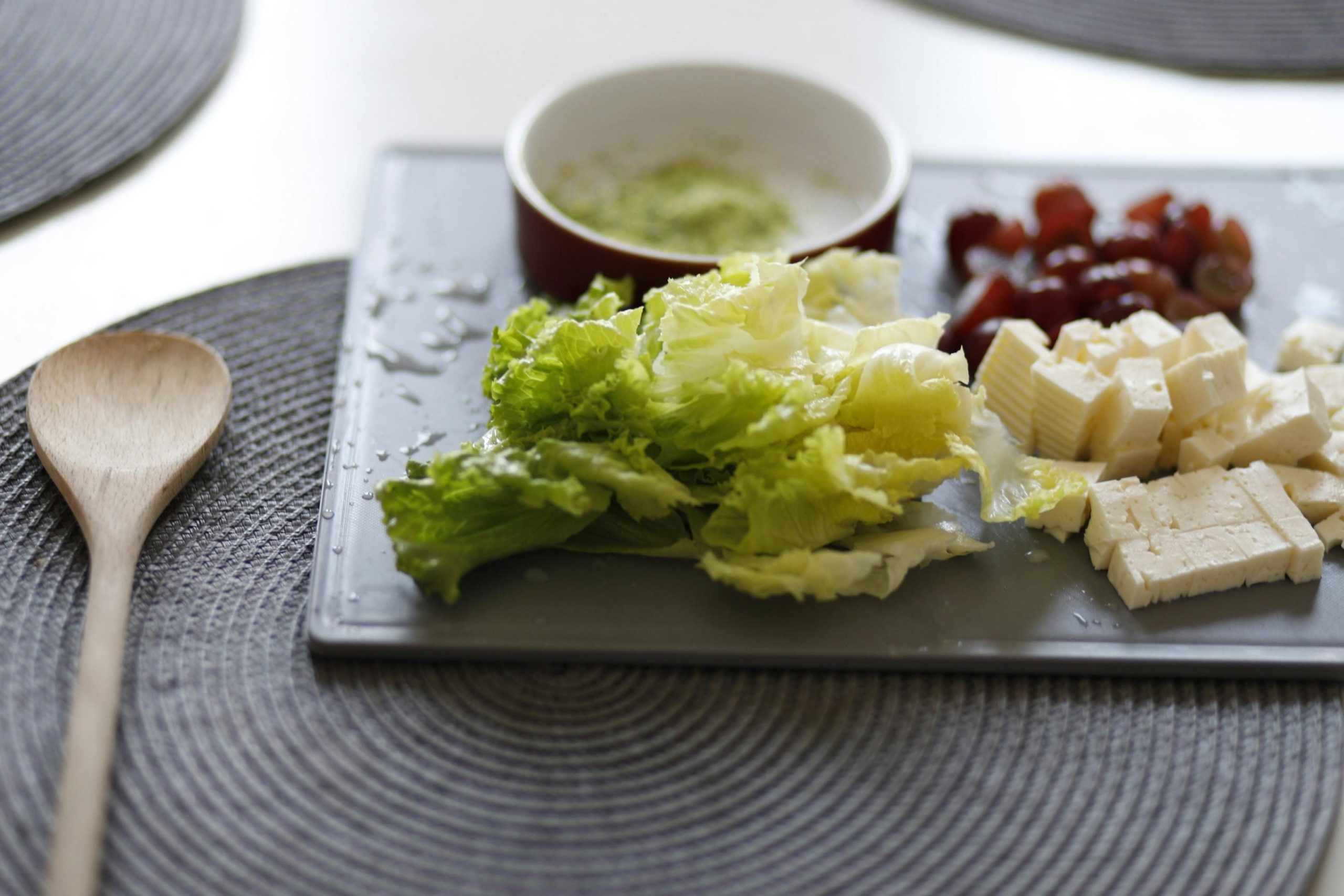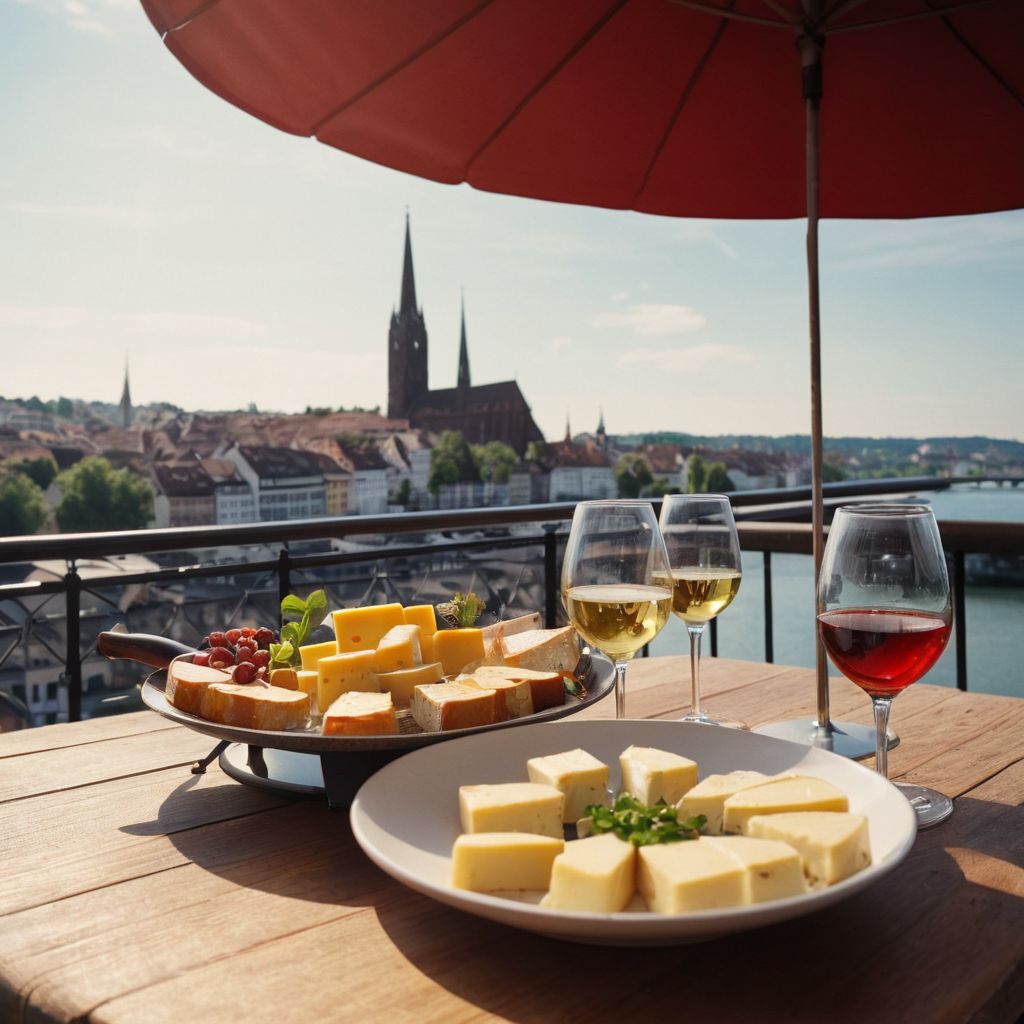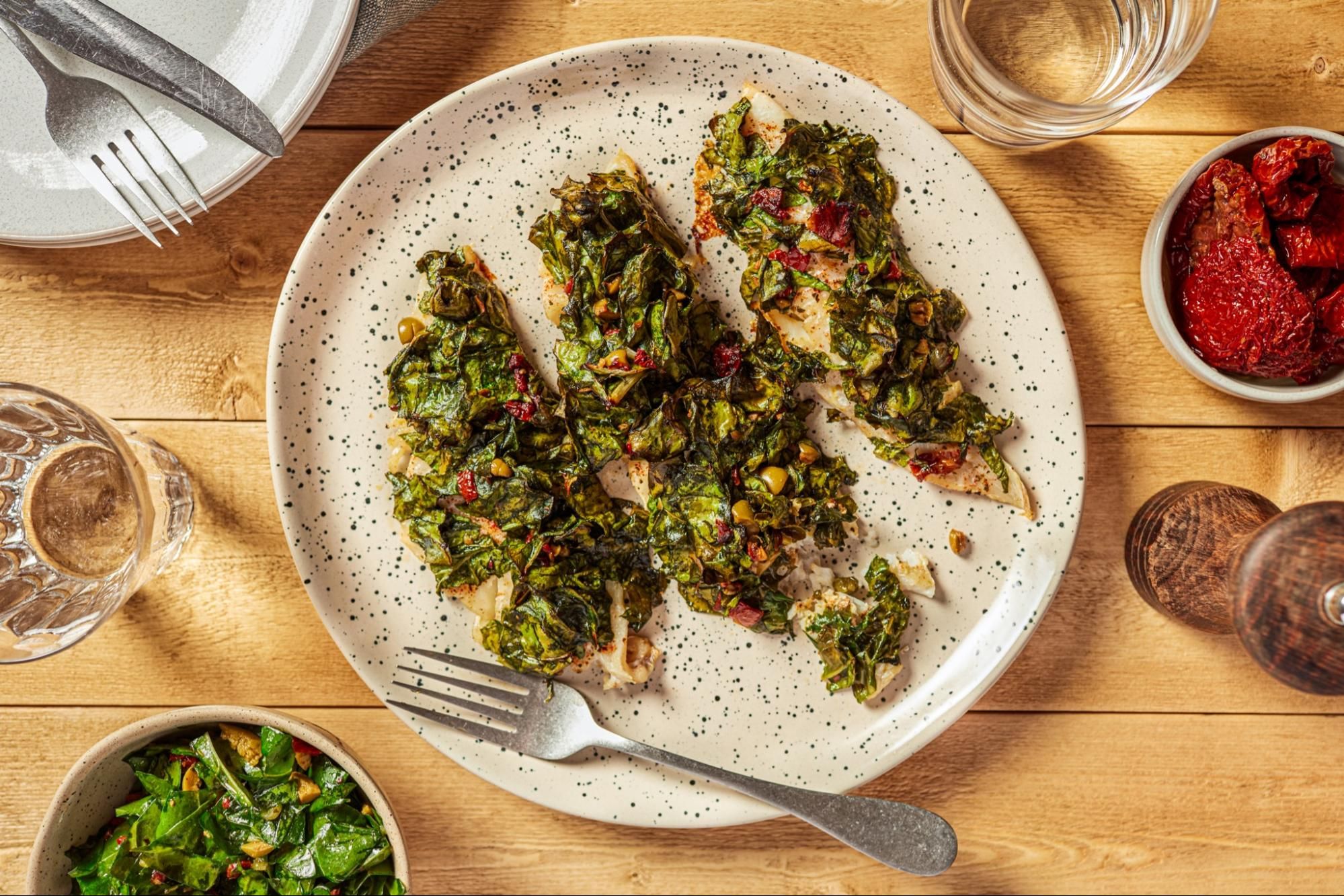Ever wondered what makes Swiss cuisine so unique and irresistible?
For many, the allure of Swiss food lies in its mystery and the difficulty in finding authentic tastes outside of Switzerland.
Swiss cuisine is a delightful blend of flavours with staples like cheese fondue, raclette, rösti, and birchermüesli forming the heart of its culinary tradition.
In this blog post, we’ll take a mouth-watering journey through Switzerland’s most popular dishes, from the cheesy depths of fondue to the sweet indulgence of Swiss chocolate, providing you with all you need to know about these iconic foods.
Cheese Fondue: The Quintessential Swiss Dish

Cheese fondue is not just a dish; it’s a cornerstone of Swiss culture, embodying the spirit of community and warmth. Originating in the Alps, this delicious dish was a smart solution by shepherds to use leftover cheese and bread during the harsh winter months. Today, it stands as a symbol of Swiss hospitality and is a must-try for anyone visiting Switzerland. The fondue’s simple beginnings highlight its role in bringing people together, making it a staple in both homes and festive gatherings across the country.
The traditional recipe for Swiss cheese fondue includes a mixture of local cheeses, typically Gruyère and Vacherin Fribourgeois, melted into a smooth consistency with dry white wine and a splash of kirsch. Here are some key ingredients that make it special:
- Swiss cheeses: Known for their quality and flavour, they are the heart of the fondue.
- White wine: Adds a slight acidity that balances the richness of the cheese.
- Kirsch: A cherry brandy that enhances the overall flavour.
Beyond its delicious taste, cheese fondue offers a unique dining experience that involves everyone at the table. Diners use long-stemmed forks to dip pieces of crusty bread into the communal fondue pot, making it a truly interactive and convivial meal. This sharing aspect is deeply ingrained in Swiss dining traditions, reflecting the country’s values of community and togetherness. Whether in a quaint mountain chalet or a bustling city restaurant, enjoying a pot of melting cheese fondue is an essential Swiss experience.
Raclette: A Melty Swiss Delight for Cheese Lovers

Raclette is more than just a meal; it’s a cherished Swiss tradition, particularly from the canton of Valais. This delightful cheese dish involves melting raclette cheese, a semi-hard cheese, and scraping it over a variety of side dishes. The process not only creates a mouth-watering meal but also a warm, sociable dining experience that brings people together. Whether enjoyed at home with a tabletop grill or at a local eatery, raclette offers a taste of Swiss conviviality.
The typical way to enjoy raclette includes a few staple side dishes that complement the creamy, melted cheese perfectly:
- Small potatoes: Boiled in their skins and often kept warm in a covered basket.
- Pickled onions and gherkins: These provide a sharp, tangy contrast to the rich cheese.
- Dried meats: Such as prosciutto or salami, adding a savoury depth to each bite.
This combination not only balances flavours and textures but also turns the meal into a hearty feast.
Pairing raclette with the right beverage is crucial to enhancing the overall dining experience. A local white wine, like Fendant from Valais, is typically recommended because its crispness and acidity cut through the richness of the cheese. This pairing underscores the importance of regional products and traditional practices in Swiss cuisine, making raclette not just a meal but a celebration of Swiss cultural heritage.
Rösti: Switzerland’s Crispy Potato Treat

Rösti, often hailed as Switzerland’s national dish, is a delightful potato pancake that captures the essence of Swiss culinary simplicity and tradition. Originating from the German-speaking parts of Switzerland, this dish was initially a common breakfast for farmers in the canton of Bern, but it has evolved into a beloved feature across the country. The basic ingredients are straightforward, requiring primarily grated potatoes that are pan-fried until they form a crispy golden crust. The choice of potato is crucial; typically, a firm, waxy variety works best as it holds together during cooking and achieves the desired crispiness.
The preparation of rösti varies slightly from region to region, adding a unique touch to this traditional dish. Some cooks prefer to parboil the potatoes before grating, while others swear by using raw, grated potatoes for a more robust texture. Here are a few popular variations you might encounter:
- Plain rösti: Just potatoes, salt, and pepper, fried in butter or oil.
- Loaded rösti: Enhanced with toppings like onions, cheese, bacon, or even a fried egg.
- Herb-infused rösti: Mixed with fresh herbs such as parsley or chives for an aromatic twist.
Regardless of the variation, rösti remains a versatile dish, often served alongside eggs, spinach, or sausages, making it a staple not just for breakfast, but for any meal.
Älplermagronen: Swiss Pasta with a Mountain Twist

Älplermagronen, affectionately known as Swiss Alpine Macaroni, is a heart-warming dish that epitomises the essence of traditional Swiss comfort food. Originating from the rugged terrains of the Swiss Alps, this dish is crafted to satisfy the appetite and provide sustenance in the cold mountainous regions. It combines the simple yet fulfilling ingredients of macaroni pasta and potatoes, with a rich blend of creamy cheese and a touch of onions, delivering a taste that is both comforting and deeply satisfying.
The beauty of Älplermagronen lies in its versatility and the ease of adding personal touches to suit any palate. Here are a few variations that you might consider:
- Cheese selection: While traditional versions often use Gruyère or Appenzeller, experimenting with different Swiss cheeses can adjust the flavour profile.
- Add-ins: Incorporating crispy onions or bacon can add a delightful crunch and richness.
- Serving suggestions: Traditionally served with applesauce or plum compote, these sides introduce a sweet contrast to the creamy, savoury flavours of the dish.
Älplermagronen is not just a meal; it’s a culinary experience that brings a piece of Swiss Alpine tradition to your table.
Birchermüesli: A Healthy Swiss Breakfast Classic

Birchermüesli, a beloved Swiss dish, is not just a staple breakfast choice but a symbol of healthy eating worldwide. Originating from Switzerland, its creation by Maximilian Oskar Bircher-Brenner aimed to promote a nutritious diet. Traditionally, it combines wholesome ingredients such as oat flakes, fresh apples, nuts, and a dash of lemon juice, mixed with yogurt or milk. This delightful combination offers a balanced meal that is both filling and nutritious, making it a perfect start to the day.
The health benefits of Birchermüesli are numerous, thanks to its rich mix of ingredients. Here are some of the key benefits:
- Oat flakes are a fantastic source of fibre, which aids in digestion and sustained energy release.
- Fresh fruits and nuts provide essential vitamins and antioxidants, supporting overall health and wellbeing.
- The inclusion of dairy or plant-based milk and yogurt adds a good amount of protein and calcium, essential for bone health. This traditional Swiss food not only caters to health-conscious individuals but also offers a versatile base that can be tailored with various fruits and nuts to suit personal tastes.
Nusstorte: The Nutty Delight of Switzerland

Nusstorte, originating from the picturesque Engadine region in Switzerland, is a beloved traditional Swiss dessert that has captured the hearts of both locals and tourists. This rich and decadent pastry is primarily filled with a luscious mixture of nuts, usually walnuts, and caramel. The outer shell is made from a buttery shortcrust pastry, which perfectly encases the sweet, nutty filling. The combination of these ingredients not only provides a delightful texture contrast but also a deep, satisfying flavour that makes Nusstorte a standout among Swiss desserts.
The appeal of Nusstorte lies not just in its delicious taste but also in its simple yet elegant composition. Key components include:
- Walnuts: These add a crunchy texture and a nutty flavour that is the heart of the dessert.
- Caramel: This brings sweetness and a gooey texture that binds the nuts together.
- Shortcrust pastry: Provides a crisp, buttery base that complements the sweet filling. Often enjoyed with a cup of coffee or tea, Nusstorte offers a perfect balance of flavour and texture, making it a must-try for anyone wanting to experience authentic Swiss food.
Zürcher Geschnetzeltes: A Creamy Culinary Staple in Zurich

Zürcher Geschnetzeltes is a creamy veal dish that holds a special place in Zurich’s culinary heart. This dish features thinly sliced veal that is sautéed and then bathed in a luxurious creamy sauce, making it a favourite among both locals and visitors. The combination of tender veal and rich sauce exemplifies the traditional Swiss knack for creating hearty, comforting meals that are perfect for the colder climates of Switzerland.
The preparation of Zürcher Geschnetzeltes involves several key steps that contribute to its unique taste and texture:
- Sautéing the veal: The meat is cooked quickly to retain its tenderness.
- Creamy sauce: A mixture of cream, white wine, and a hint of flour creates the silky texture that characterises the dish.
- Adding mushrooms: Sliced mushrooms are a common addition, providing an earthy flavour that complements the creamy sauce beautifully.
Zürcher Geschnetzeltes is not just about taste but also about tradition, often served with sides that enhance its flavours. Typical accompaniments include Rösti, a Swiss-style potato pancake, or sometimes wide noodles known as Pappardelle. This dish is a testament to Zurich’s rich culinary heritage and remains a must-try for anyone wanting to experience the essence of traditional Swiss dishes.
Saffron Risotto: A Luxurious Swiss-Italian Fusion

Saffron risotto, a luxurious dish that marries the rich culinary heritages of Switzerland and Italy, is a true testament to the fusion of flavours across European borders. This dish uses saffron, known as the ‘red gold’, sourced from Mund in the Valais region, which gives it a distinctive colour and an exquisite, subtle flavour. The Swiss version, particularly noted for its creamy texture, combines this precious spice with traditional risotto rice, creating a dish that’s both visually appealing and deeply satisfying.
Preparing Swiss saffron risotto involves a careful cooking process to ensure the rice absorbs the saffron’s unique aroma effectively, releasing its full potential in the final dish. Key steps include:
- Gently toasting the rice to enhance its nutty flavour before adding the liquids,
- Gradually adding warm broth to achieve the perfect creamy consistency, and
- Incorporating high-quality Swiss cheese towards the end for an extra layer of richness. This meticulous preparation culminates in a dish that not only captivates your taste buds but also showcases the luxurious essence of saffron.
Zopf: The Traditional Swiss Braided Bread

Zopf is a traditional Swiss bread that holds a special place in the hearts of the Swiss people, particularly cherished during Sunday breakfasts. This soft, white bread is distinguished by its braided form, which not only makes it visually appealing but also enhances its texture. The braiding technique involved in making Zopf is not just for aesthetics; it’s a skill passed down through generations, symbolising the intricate craftsmanship of Swiss bakers. The bread’s popularity is such that it’s almost synonymous with a leisurely Sunday morning, often enjoyed with jams, honey, or simply a touch of butter.
The cultural significance of Zopf extends beyond its taste and presentation. It is deeply embedded in Swiss tradition, often appearing on tables during major holidays and family gatherings. Here are a few key points that highlight its cultural importance:
- Sunday mornings: Zopf is a staple, embodying the relaxed pace of the day.
- Family gatherings: Its presence marks special occasions, bringing a sense of comfort and nostalgia.
- Swiss identity: Zopf is a symbol of Swiss culinary pride, often used to introduce Swiss culture to others. This bread is not just food; it’s a part of Swiss heritage that continues to be cherished across generations.
Leckerli: A Festive Swiss Biscuit from Basel

Leckerli, a traditional Swiss biscuit originating from Basel, is an integral part of Swiss culinary heritage, especially during festive seasons. Known for its rich spiced flavour and chewy texture, Leckerli is made with a blend of honey, almonds, hazelnuts, candied peel, and Kirsch. This biscuit is not just a treat; it’s a deep dive into the history of Basel’s baking traditions, dating back to when spice merchants created these delights over 700 years ago.
The appeal of Leckerli extends beyond its taste to its cultural significance during Swiss holidays, particularly Christmas. Here’s why it’s a must-try:
- Festive Flavour: The unique combination of spices and honey captures the essence of Swiss holiday spirit.
- Historic Recipe: Enjoying Leckerli is akin to experiencing a piece of history, as the recipes have been passed down through generations.
- Cultural Symbol: It embodies the warmth and joy of Swiss celebrations. Whether bought from a local bakery or made at home, Leckerli remains a cherished part of holiday festivities in Switzerland.
Swiss Chocolate: A Rich Tradition of Excellence

Swiss chocolate is celebrated globally for its superior quality and exceptional taste. The journey of Swiss chocolate began in the 17th century, but it was in the 19th century that it gained prominence thanks to innovations such as the invention of milk chocolate by Daniel Peter, utilising Henri Nestlé’s condensed milk.
The varieties of Swiss chocolate, such as milk chocolate, dark chocolate, and white chocolate, each offer unique flavours and textures that cater to different palates. Here are a few reasons why Swiss chocolate stands out:
- Smooth texture: Achieved through processes like conching.
- High-quality ingredients: Including premium cocoa beans and milk.
- Rich aroma: Enhanced by meticulous production techniques.
Today, Swiss chocolate is not just a treat but a cultural icon that represents Swiss precision and excellence in craftsmanship. Whether given as a gift or enjoyed as a personal indulgence, it continues to be a symbol of luxury and refinement in the culinary world.
Experience Popular Swiss Foods with Indulge‘s Culinary Tours
INDULGE‘s culinary tours offer a unique opportunity to experience Swiss cuisine firsthand in Zurich. These tours are designed to introduce participants to a variety of Swiss dishes, from the creamy delights of cheese fondue and raclette to the crispiness of rösti and the sweet INDULGEnce of Swiss chocolate. Each tour is led by local experts who not only share delicious food but also the history and culture behind each dish.
Beyond just tasting, these tours provide an exclusive dining experience that delves deep into Zurich’s culinary heritage. Participants will enjoy:
- Guided walks through Zurich’s historic Old Town and the vibrant Zurich West.
- Visits to local eateries and artisanal shops where traditional Swiss foods are made.
- A chance to learn cooking techniques from Swiss chefs.
This immersive approach ensures that each participant gains a comprehensive understanding of Swiss culinary arts and leaves with lasting memories of their gastronomic adventure.
Frequently Asked Questions
What is Switzerland’s most popular food?
Switzerland’s most popular foods include cheese fondue, raclette, rösti, and birchermüesli. Among these, cheese fondue is particularly iconic, often regarded as a quintessential Swiss dish that embodies the spirit of community and warmth.
What is Switzerland’s national dish?
Rösti is often hailed as Switzerland’s national dish. It is a crispy potato pancake that originated from the German-speaking parts of Switzerland and was initially a common breakfast for farmers in the canton of Bern.
What is a traditional Swiss breakfast?
A traditional Swiss breakfast often includes Birchermüesli, a dish made from oat flakes, fresh apples, nuts, and a dash of lemon juice, mixed with yogurt or milk. This combination offers a balanced meal that is both filling and nutritious.
What is staple food in Switzerland?
Staple foods in Switzerland include dishes such as cheese fondue, raclette, rösti, and birchermüesli. These dishes are deeply ingrained in Swiss culinary tradition and reflect the country’s values of community and togetherness.








